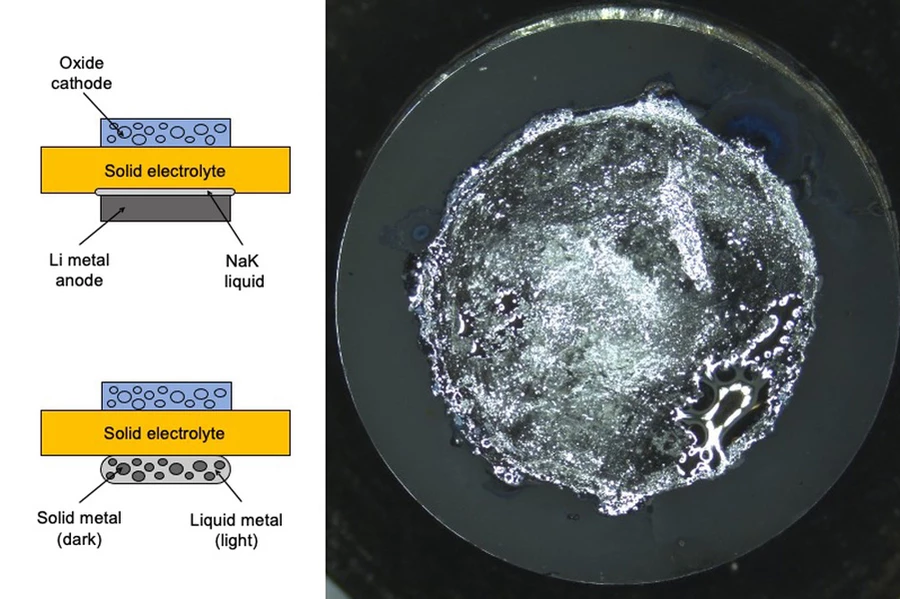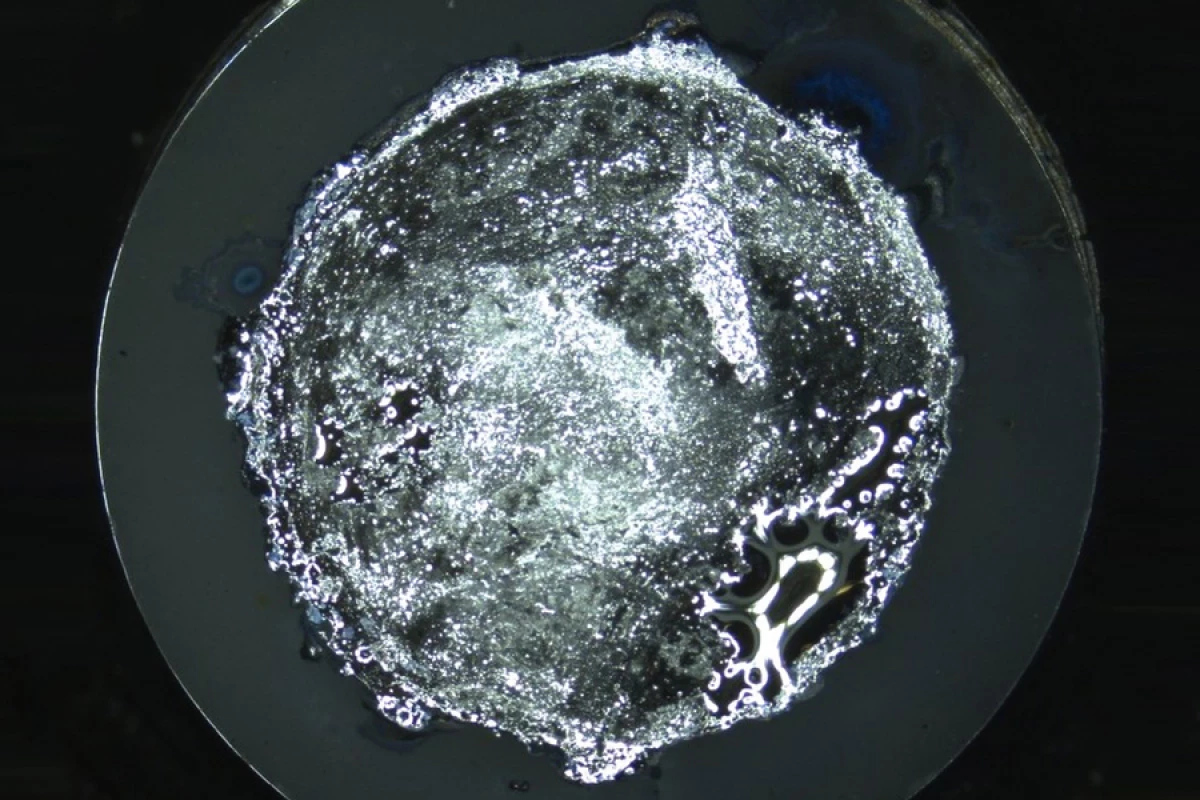One of the many potential pathways that could lead us to next-gen energy storage for smartphones, laptops and electric vehicles is the use of a solid-state electrolyte, in place of the liquid electrolytes used in today's lithium batteries. A research team in the US has developed a prototype version of these solid-state batteries that overcomes some of the key roadblocks in this area, demonstrating stable, high-capacity storage through the use of a novel, self-healing material.
In today's lithium-ion batteries, the liquid electrolyte carries the lithium ions back and forth between a pair of electrodes as the battery is charged and discharged. If the electrolyte can instead be made out of solid materials, it could make batteries safer and enable far greater energy density. So much so, experimental versions of these cells have been shown to be capable of storing around double the energy of current lithium-ion solutions.
The trouble with this are little tentacle-like formations called dendrites, which tend to grow on the surface of one of the electrodes as the battery cycles. These tiny needles can then cause the battery to short circuit and fail, or potentially catch fire. So, coming up with a solid-state design that circumvents this problem would be a big breakthrough.
The authors of this new study, who hail from MIT, Texas A&M University, Brown University and Carnegie Mellon University, have put forward a promising solution. The researchers developed a semi-solid metal electrode made of sodium-potassium alloys that they liken to the material dentists use to fill cavities – firm, but able to flow and be molded.
This material has just the right amount of give in it so that when it comes into contact with the solid electrolyte, it avoids forming tiny cracks that would normally appear in completely solid, but more brittle, electrode materials, which typically lead to the formation of dendrites.
“The motivation here was to develop electrodes that are based on carefully selected alloys in order to introduce a liquid phase that can serve as a self-healing component of the metal electrode,” Park says.
As the battery is cycled, the operating temperatures keep the material in just the right semi-solid phase to accommodate high currents, around 20 times greater than using solid lithium, without forming dendrites. This addresses another shortcoming of solid-state batteries so far, which haven't allowed for the kind of current densities that would enable recharging at practical rates, at least not without the formation of the dendrites.

In another design, the researcher integrated a thin film of liquid sodium-potassium alloy into the battery, sandwiching it in between a solid electrode and solid electrolyte. This also prevented the formation of dendrites, opening up another interesting avenue for exploration.
Buoyed by these promising early results in their experimental designs, the researchers are now investigating ways the technology could be applied to different solid-state battery architectures, and are optimistic about the possibilities.
“We think we can translate this approach to really any solid-state lithium-ion battery," says co-author Venkatasubramanian Viswanathan, professor of mechanical engineering at Carnegie Mellon University. "We think it could be used immediately in cell development for a wide range of applications, from handheld devices to electric vehicles to electric aviation.”
The research was published in the journal Nature Energy.
Source: MIT




